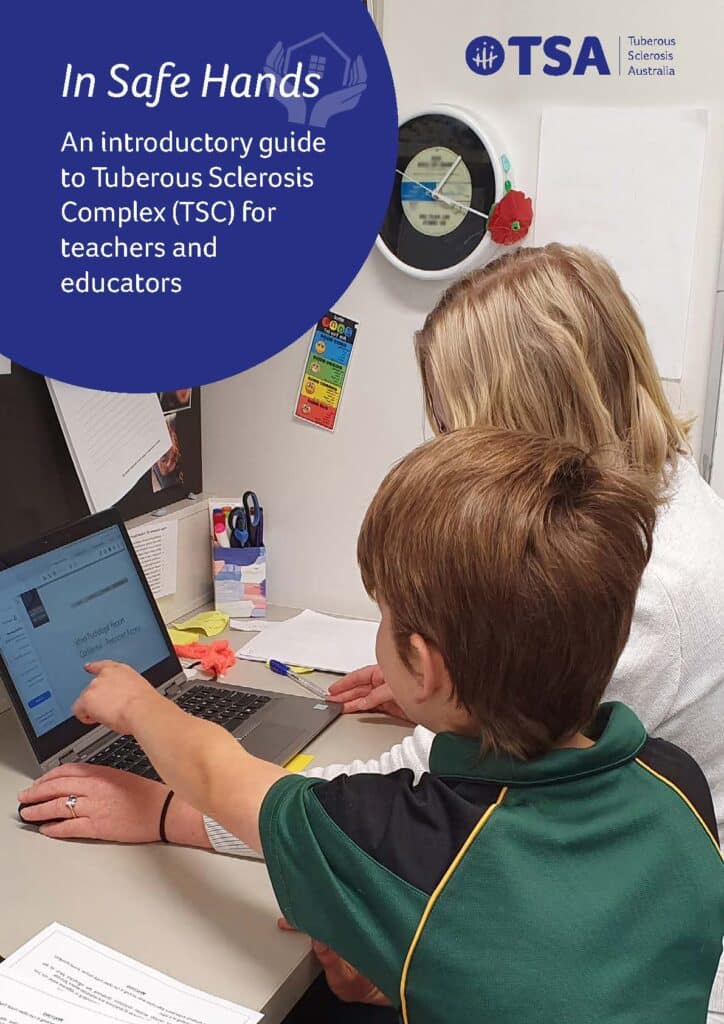
In Safe Hands: An introductory guide to TSC for teachers and educators
You are probably reading this guide because you are a teacher or educator of a child affected by TSC (Tuberous Sclerosis Complex). Thank you for taking the time to find out more about this rare disease. This guide will help you in understanding TSC and will provide some insights into the learning challenges a child living with this condition might face. These challenges can include cognitive difficulties as well as behavioural, mental health and physical challenges.
Download a PDF of the guide by completing the form below.
This guide for teachers and educators is part of TSA’s In Safe Hands series, which also includes an advocacy guide for families of children with TSC. Our goal is for families to feel they can trust their child with TSC will be ‘in safe hands’ during their school years and feel their child will be understood and supported both physically and emotionally.
TSC affects every child differently and the range of cognitive abilities in affected children is highly variable so not all the information in this guide may be relevant in understanding how TSC affects the child in your classroom.
However, we believe this information can be useful to teachers and educators in all educational settings, including primary and high schools, day care and preschools, mainstream and special schools.
Some children living with TSC may be in good general health, while others are severely limited by the disease and unable to attend school regularly. Even if you have had a child with TSC in your classroom in the past, do not assume you understand the needs of another child with TSC. There is nothing consistent about TSC except that it is inconsistent!
An introductory guide to TSC for teachers and educators
What is TSC?

TSC (Tuberous Sclerosis Complex) is a rare, non-contagious, genetic condition that can cause growths (non-malignant tumours) to develop in many organs of the body including the brain, skin, heart, lungs and kidneys. Any or all of these organs may be affected. TSC causes different signs and symptoms in each person who is affected and can range from treatable skin abnormalities to severe epilepsy, intellectual disability and autism.
It is estimated that 1 child in every 6,000 has TSC and approximately 2,500 people in Australia have the condition. TSC occurs equally in all races and ethnic groups, and in both genders.
What causes TSC?
We are all born with a TSC1 and TSC2 gene. A person has TSC because they have a change in either their TSC1 or TSC2 genes. Many children with TSC have siblings and parents who do not have TSC. In fact, around two-thirds of children born with TSC have absolutely no family history of the disease.
TSC affects each person differently. Even people who share the same TSC gene change can have different signs and symptoms. There is no reliable way to predict how TSC will affect a particular child.
Click here for more information on the signs and symptoms of TSC
Treatment options
There is no known cure for TSC but the good news is that, over the last 10 years, research has changed the way we understand, manage and treat this complicated disease. This means a child can now benefit from new treatments and early interventions that may reduce the impact TSC will have on their life.
There are now several medications that can help with epilepsy management and tumour growth. Many children affected by TSC have to experiment with different medications and doses of those medications to hopefully get effective control of their symptoms.
Many children with TSC act differently when starting new medications or changing the dosage of medication. Medication may cause hyperactivity, aggressive behaviours or, conversely, cause a child to be sleepy and drowsy. Medications can also cause a change in appetite or alertness.
Infection prevention and control
Some children living with TSC are on medications that reduce their immunity. It is important that they avoid infections.
Good hygiene practices should be implemented, such as:
- Social Distancing: keeping a distance of 1.5 metres from people who have a respiratory infection, and wearing a face mask if practical
- Regular Hand Hygiene: ensuring soap/water, alcohol-based hand sanitiser and tissues are available in the classroom
- Shared Surface Hygiene Practices: encouraging everyone to wash their hands after using commonly shared items, and regularly wiping down shared surfaces with disinfectant wipes
- Basic Hygiene Practices: encouraging children not to share drinks, straws or eating utensils
- Cough/Sneeze Hygiene: encouraging children to cover their coughs or sneezes with a tissue then throwing the tissue away immediately and washing or cleaning hands. Alternatively, coughing or sneezing into their inner elbow if a tissue is not available.
TSC associated neuropsychiatric disorders (TAND)
Almost 90% of people affected by TSC will suffer from one or more TSC associated neuropsychiatric disorders (TAND) over their lifetime. The level of severity varies widely. TAND can affect a child’s quality of life and their education and learning. The TAND Checklist is a helpful screening tool.
TAND can impact six areas
Behaviour
Children with TSC may have some of the following behaviours of concern:
- Aggression
- Explosive behaviour
- Inattention
- Self-injury
- Anxiety
- Extreme shyness
- Poor eye contact
- Sleep-related issues
- Depressed mood
- Hyperactivity
- Repetitive behaviours
Psychiatric
Examples of psychiatric disorders children with TSC may be affected by include:
- Anxiety disorder
- Depressive disorder
- Attention Deficit Hyperactivity Disorder (ADHD)
- Autism Spectrum Disorder (ASD)
Intellectual
Learning problems in children with TSC may include:
- Intellectual disability
- Language disorders
- Uneven intellectual profiles
Academic
Children with TSC struggle most commonly in the following academic areas:
- Mathematics
- Writing
- Reading
- Spelling
Neuropsychological
Some children with TSC may struggle with one or more of the following neuropsychological issues:
- Attentional switching
- Memory recall
- Cognitive flexibility
- Spatial working memory
- Dual tasking
- Sustained attention
Psychosocial
Children with TSC may have difficulties dealing with:
- Parental stress
- Self-esteem
- Relationship difficulties
- Self-efficacy
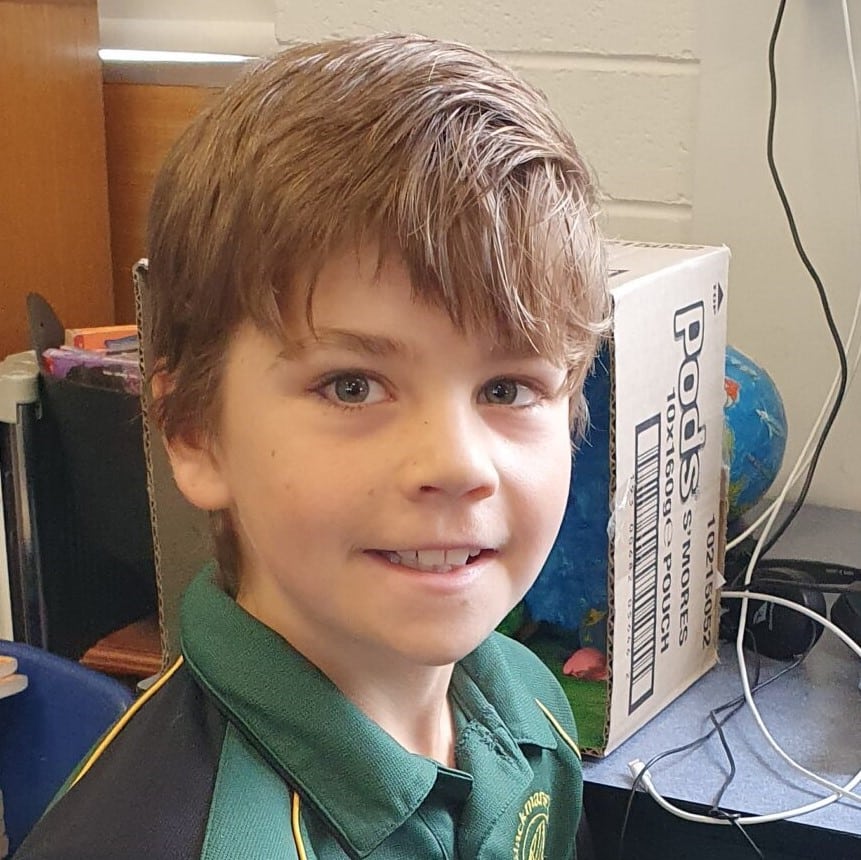
One thing I did at Caleb’s initial learning plan meeting was to look at the TSA website with his teacher and the support teacher. A lot of questions and discussion arose from looking at the website together. I found the TAND questionnaire to be a very useful resource. It explains the importance of monitoring children with TSC and how things can change.
Epilepsy that causes seizure activity is very common in children with TSC.
Epilepsy
Epilepsy may affect a child’s learning and development, and this may be due to seizures, sleep quality or side effects of medications such as sleepiness or hyperactivity. This may cause impacts on memory, concentration, mood and behaviour. In addition to medical treatment to manage seizures, children may benefit from early intervention and additional supports in school.
All children with epilepsy must have a Seizure Management Plan, which their medical team will be happy to provide and update. It provides management strategies and guidance on supervision and safety.
Having an epilepsy educated staff team as well as an individualised Seizure Management Plan for each child with epilepsy underpins a safe and nurturing environment.
Seizures
Seizures occur when there is a disruption to the normal electrical activity of the brain. There are many different types of seizures depending on where in the brain the abnormal electrical activity occurs. Most seizures fall into two categories:
- Focal, which involve one small area of the brain, or
- Generalised, which involve the whole brain.
In TSC focal seizures are the most common, but virtually all seizure types are possible (there are over 40 and in some cases these can be frequent and/or severe). While some seizure types are instantly recognisable, others are far less obvious and present as staring episodes, subtle jerks or movements, which often go unrecognised. Some children will have seizures during sleep and/or at the time of awakening which may leave them sleepy and lethargic throughout the day.
Focal seizures are different depending on which part of the brain is affected. They can be quite subtle and difficult to recognise in some cases. Symptoms of focal seizures can include:
- a feeling of déjà vu
- numbness or tingling
- single sided body movement
- unusual or repetitive behaviours.
The child may maintain awareness and consciousness – this is known as a focal with awareness seizure.
In some cases, the child may lose awareness and not be able to respond, or their response may be confused, and after the seizure they may have no memory of the seizure – this is known as a focal with impaired awareness seizure.
In generalised seizures, there can sometimes be a loss of consciousness. Some of the different types of generalised seizures and their associated symptoms include:
- Tonic clonic – body stiffening and jerking
- Absence – a brief lack of awareness
- Atonic – sudden loss of muscle tone that may cause the person to fall to the ground or a sudden head nod
- Myoclonic – sudden single jerks of limb/s, trunk.
There are also many others.
Many children have identified triggers that make their seizures more likely to occur.
Whenever there is seizure activity you should refer to the child’s Seizure Management Plan. In general, if a convulsive seizure lasts longer than 5 minutes, or you are very worried, you should call an ambulance. There are also instances when an ambulance should be called sooner than this general rule eg, if this is a new presentation, an injury occurs, there are difficulties breathing or the seizure occurs in water.
It is important to have ongoing communication with a child’s parents about seizure activity. The child’s medical team will be working to reduce seizures and the information you provide can be very helpful in understanding the impact of medication changes. There might be times when you will be asked to help the parents and doctors by monitoring and documenting seizure activity including the date and time, what occurred before, during and after the seizure, the duration and a detailed description of the event. This information can assist in developing effective treatment plans in addition to identifying triggers and improving overall seizure control.
Training
If you would like to learn more about seizures the epilepsy nurse/educator from your local hospital or a representative from a national or state-based epilepsy organisation such as Epilepsy Australia or Epilepsy Action Australia can provide professional education.
Schools can be accredited for accessing training and resources in epilepsy
More information on epilepsy:
Epilepsy Action Australia:
- About epilepsy: factsheets and brochures
- Resources for teachers and schools
- About epilepsy: Information for teachers
- For more on seizure first aid and seizure management plans
Paediatic Epilepsy Network (although this is a NSW-based resource, the information is universal):
Many children who are affected by TSC will exhibit no symptoms in the classroom and can participate in mainstream schooling in the same way as a child without TSC.
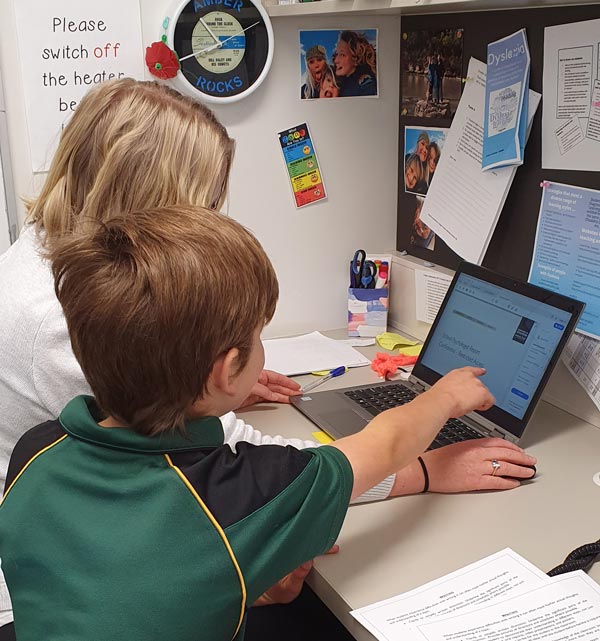
Other children may require extra help in certain areas, specifically reading, writing, maths or language. These children may have normal (average) cognitive skills (so average learning potential) but struggle to learn due to Specific Learning Disorders. These children have a capacity to learn and need specialist learning support. This is a common issue in children with TSC. Additionally, children with TSC can have some very specific deficits often with visuospatial and fluid reasoning components of learning which need specialist neuropsychology assessment and can lead to unusual patterns of strength and difficulties which could be misinterpreted as behavioural – eg, the child is seen as not interested or lazy as they only struggle in really specific aspects of learning.
Children with TSC who have significant problems, such as severe epilepsy and/or intellectual disabilities who struggle to learn due to cognitive issues will learn more slowly and have difficulties with abstract concepts. These children will need additional and individualised support.
Families of children with TSC are often anxious about whether a school, day care facility or preschool can accommodate their child’s needs. As a teacher or educator, you can provide considerable reassurance to both the child and their family by working with them and other professionals to ensure a positive learning experience. Meet with the family to find out about their child’s TSC and how it affects them. If possible, ask them to complete a summary particular to their child using a personal information form. Work together to determine the best way to support and meet their child’s needs as they progress through school.
A child who is affected by TSC may worry about being different from their peers and the condition may impact their behaviour and/or relationships. A teacher or educator who is aware of the nature of the condition is better able to help them get the most out of school and develop to their maximum potential.
Individual education plans (IEPs)
Individual education plans (IEPs), or individual learning plans/learning improvement plans assist children who need a range of supports with their education, including children affected by TSC. They are written statements that describe the adjustments, goals and strategies to meet a child’s unique learning needs. The best plan starts with and builds on the child’s strengths and interests.
It is important to have a good baseline of the child’s abilities and understand how they learn. TSC experts recommend all children diagnosed with TSC have a thorough developmental and behaviour evaluation at the time of diagnosis so that early intervention can be implemented.
An evaluation may also be useful at times of transition such as from primary to secondary school or when the child does not seem to be coping.
An educational evaluation assesses specific cognitive abilities affected by any TSC lesions in the brain. It provides valuable information about a child’s development in areas such as language, memory, attention, perception, coordination and personality.
Many parents of children with TSC will already be working with a neuropsychologist, psychologist and/or paediatrician and have current assessments. The recommendations in these evaluations include valuable information that will support the development of an IEP that best supports the needs of the child.
School counsellors are also an important resource to support families and educators to understand each child’s strengths, difficulties and specific needs.
The needs of a child with TSC may change over time and the IEP may need to be modified more than once during a school year.
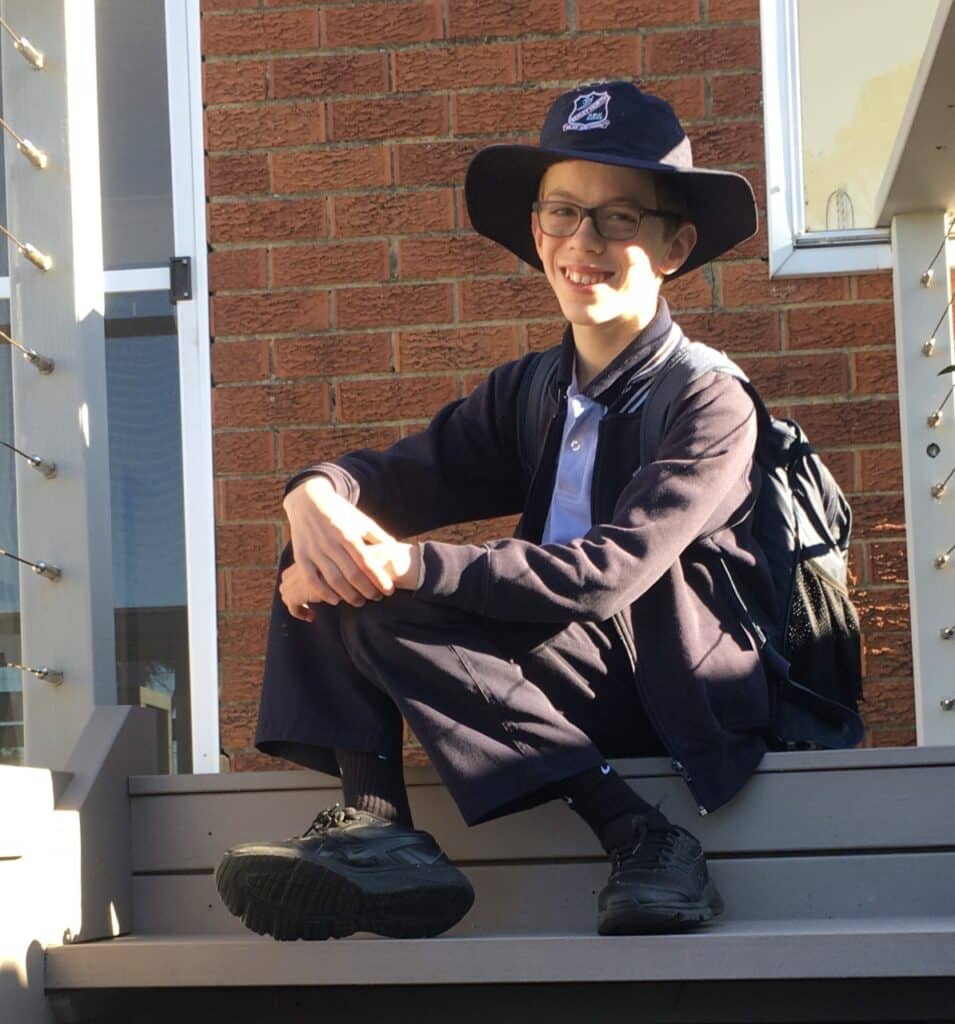
Liam has an IEP and we have met with his teacher, the principal or deputy, the support coordinator and the school’s psychologist at the start of each year. This meeting has provided a good opportunity to talk about Liam’s TSC diagnosis, his particular individual needs and set up a plan for the year ahead. Throughout the year any concerns we’ve had have usually been addressed via email. At the end of each year we have discussed who his teacher will be and which supportive friends he might share a class with in the following year.
Notice and discuss behaviour changes or concerns
Because of the negative impact behavioural issues can have on children affected by TSC, early identification and interventions are recommended. Communicating and working with the child, their family and health professionals will help support their educational success.
If you notice any type of change in a child’s social interaction, behaviour, learning and/or energy levels (eg they are more aggressive or more tired) you should contact the child’s parents to discuss your concerns.
You may be the first person to notice a behaviour change. Changes could be a side effect of medications they are taking or a warning sign that medical intervention is required, particularly in a child who has communication issues. For example, occasionally a child with TSC can develop a type of brain tumour called a SEGA. Signs of this include changes in behaviour, headaches, nausea and vomiting, double vision and imbalance.
It is crucial to discuss with the family any behaviour changes in a child with TSC to eliminate a medical cause.
Even if the behaviour can be linked to the child’s TSC, it still needs monitoring and management. A child’s needs will change depending on their health and medication and it may be necessary to adapt and modify their IEP.
Your relationship with a child affected by TSC
All teacher/child relationships involve trust and understanding. The strategies you use to help build trust and understanding with a child affected by TSC will depend upon the individual child and their particular abilities and challenges. Some common strategies include:
- getting to understand their unique likes, dislikes and interests
- being very specific in what you are asking them to do
- letting them know they can count on you NOT to put them in an embarrassing situation such as asking them to perform a task that they are not good at doing in front of the class
- writing directions on the board, verbally going over directions and giving examples
- ensuring that classroom rules are understood and visible in the classroom.

What I have learnt from my journey with Max through school is that some teachers are naturals at working with kids with ‘issues’ and others can learn…Max and I have been lucky in finding people both at primary school and high school who really connected with him and had a genuine interest in helping his education. Persistence is the key.
Your relationship with the family of a child affected by TSC
A parent of a child with TSC often has an extra layer of anxiety in sending their child to school. They may worry about how teachers and school staff will understand and help manage their child’s condition. They will want to know that their child is being adequately supported to do well at school and reach both their academic and social potential, particularly if they learn differently.
Your relationship with the parents of a child affected by TSC is just as important as your relationship with the child themselves. Parents are usually the best source of information about their child’s TSC. Through necessity, many have become experts about the disease. You can gain a lot of information about TSC and how it affects a particular child by talking to the parents and asking questions.
TSC is a very complicated condition and can change very quickly. Seizures, heart issues, lung issues, brain surgery and medication changes are just a few of the issues some families deal with on a day-to-day basis. Parental stress is common. If you are struggling in your dealings with the parents of a child living with TSC, please remember what is going on in their lives and try to be empathetic and continue to work with them as they do know their child best.
Teamwork
A team approach provides the very best learning model for a child with TSC. Communicating well and often, working in partnership with the child, the child’s parents and other professionals involved in their care, will help create a positive environment that allows the child to reach their full potential and have their very best learning experience.
The transition to high school
The high/secondary school environment can pose fresh challenges for a child with TSC because of having multiple teachers and moving from one classroom to another.
Adolescence is also a time which can cause changes to TSC-related symptoms. As the child’s body adapts to ‘growing up’ changes, symptoms or their severity may change. For example, a child whose TSC seizures were well controlled during primary school may find that this changes in adolescence. They may, for instance, need additional medication.
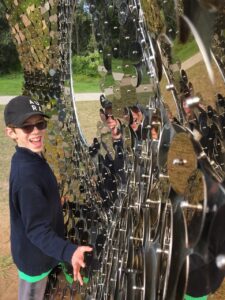
Liam enjoys school. He likes his teachers and routines. He has struggled with anxiety at times (particularly on stormy days) and making connections with his own peer group (he’ll tend to gravitate to the sandpit with the younger kids). Even though he enjoys choir and drama group, often he chooses not to go. Despite the occasional challenges, being able to stay in a familiar environment at the same school has been a great benefit to Liam.
This is a (fictional) example IEP document for a child with TSC. This example takes into account the learning needs and issues of the child with TSC. The Content Descriptors have been taken straight from the Australian Curriculum. The Learning Expectation is the personalised goal that teachers would write for the child. The Strategies are what or how the teacher would use to support the needs of the child and their learning.
The IEP is modified and individualised depending on the challenges each child has related to their TSC.
For example:
- For a child with specific learning disorder/dyslexia, the teacher might document the types of supports they would use in the ‘strategies’ section to allow the child to still achieve and show their knowledge of the curriculum.
- For a child with epilepsy, the teacher might document strategies such as 1:1 support, watch for fatigue, check for seizure activity, repeat instructions and check for understanding.
- For a child with Autism Spectrum Disorder they might include strategies such as wait time, use of visuals, 1:1 support.
Sample IEP template (PDF)
Many children affected by TSC can participate in mainstream schooling in exactly the same way as a child without TSC. These children may not exhibit any of the learning difficulties or disabilities described below.
More information on supporting children with disability in Australian schools
Language delays
Some children affected by TSC will have problems associated with specific language delays.
- Receptive language (how one listens and understands the content of what is being said and portrayed) is usually good.
- Abstract language, ideas and concepts can be difficult to grasp and metaphorical expressions or idioms (where an idea is expressed by referring to something else in a non-literal way eg ‘call it a day’ or ‘sitting on the fence’) may be rarely used or understood.
- Expressive language (how one communicates orally) can be challenging for some children with impaired social communication skills. Extreme word retrieval difficulties can be a problem when a child is asked to request objects, make choices, ask questions, answer and describe events.
- As far as auditory language is concerned, instructions may be heard but not retained long enough for them to be actioned.
Other learning disabilities
The following recognised learning disabilities along with warning signs and possible strategies that you are probably already familiar with may be evident and/or diagnosed in some children affected by TSC. Early identification and intervention is critical to successful management.
- Dyslexia
- Dyscalculia
- Dysgraphia
- Executive function and attention
- Autism spectrum disorder (ASD)
- Attention-deficit hyperactivity disorder (ADHD)
Dyslexia is a learning disability that can hinder a child’s ability to read, write, spell and sometimes speak. The area of the brain that controls the ability to translate images received from the eyes or ears into understandable language may be affected. But the child’s vision or hearing ability has nothing to do with their learning difficulties.
Possible warning signs that a child may have dyslexia:
- Trouble moving to the rhythm of music
- Cannot remember content of stories
- Does not understand left from right
- Trouble with visual spatial concepts
- Uncoordinated (skipping is difficult)
- When speaking, may use wrong word or reverse words
- When writing may reverse letters, words, and/or numbers
- Cannot proof their own written work
- Does not understand time
- Does not understand seasons
Early identification and intervention for a child suspected of having dyslexia is needed.
Dyscalculia is an inability to understand the meaning of numbers and/or inability to apply maths principles to solve problems.
Possible warning signs that a child may have dyscalculia:
- Does not understand numbers and their quantities
- Does not understand addition
- Does not understand subtraction
- Does not understand multiplication
- Does not understand division
- Does not understand abstract concept (algebra)
- Has difficulty in making change and handling money
- Does not recognize patterns
- Does not understand days, weeks, months
- Does not understand time
- Has difficulty lining numbers up on a page
- Has difficulty telling the time
Strategies that teachers and educators may use to assist a child with dyscalculia include:
- Assistive technology (calculator)
- Using music to teach maths facts
- Using pictures for word problems
- Colour coding maths problems (eg red subtraction, green addition)
- Number charts
- Graph paper to keep numbers in line
- Explicit instruction (drill and practice)
- Verbalizing the steps (think-aloud strategy)
- Immediate error correction and feedback
- Cumulative review
- Small group instruction
- Adequate practice opportunities
- Motivators
- Instructional design to minimise the learning challenge (eg, breaking maths problems down into component steps)
- Frequent assessment and the provision of feedback to the child and the teacher alike
- Peer-assisted instruction
- Engage children by using their prior understanding to introduce new topics
- Scaffold instruction (providing a scheme for teaching one skill; applying that scheme for teaching another skill; reducing the use of the scheme as new skills are taught)
Dysgraphia is a learning disability that affects written expression and can result in difficulty in processing the spoken language. Children with dysgraphia have visual-spatial difficulties and struggle in organising letters, number and words on a line or page. They can also have language processing difficulties. It may take a child with language processing difficulties 10 seconds or more to interpret what is being asked of them.
Possible warning signs that a child may have dysgraphia:
- Trouble writing or forming letter shapes
- Is not consistent with spacing between words and letters
- Tires of writing even short assignments
- Refuses or is reluctant to do writing assignments
- Does not like to draw or colour
- Awkward pencil grip and unnecessary pressure on pencil point
- Cannot stay on the line when using scissors to cut
- Older children may struggle getting thoughts down on paper
Strategies that teachers and educators may use to assist a child with dyscalculia include:
- Using a computer for writing assignments
- Providing occupational therapy
- Using a tape recorder to tape ideas and organise thoughts
- Using a scribe
- Using a peer note taker
- Testing orally
- Minimising writing assignments
- Allowing extra time to understand, memorise, and apply writing strategies
- Small group instruction in writing steps
Issues with executive function (mental skills including working memory, flexible thinking, and self-control) and attention deficit disorders are common in children living with TSC and can cause learning problems in ordinary class work.
Some children with TSC will be diagnosed with autism spectrum disorder (ASD) and will exhibit autistic behaviours, including difficulty in social relationships with peers, obsessive behaviour, a need for structure and routine, and communication/language delay.
Children may have difficulty with social relationships and need support to make friends with others in their peer group. Through careful observation and thoughtful recommendations, teachers, educators, parents, and other professionals can work together to develop strategies to help a child achieve a level of comfort with peers inside and outside the classroom.
Obsessive behaviour or insistence on sameness is one of the autistic characteristics exhibited by some children with TSC. Changes in routine or separation from a prized possession can lead to behaviour outbursts, which are often the child’s method of communication due to a developmental delay in speech and language.
Some behaviour manifestations of ASD include:
- An inability to connect with others, often demonstrating a lack of eye contact and disinterest in physical contact such as hugging or hand-holding
- Language skills are poor or non-existent
- Issues with sensory processing (sensitive to light, textures, and noise)
- A tendency to have narrow patterns of interests and activities coupled with repetitive and obsessive behaviours, and a lack of pretend or imaginative play
- Sensory seeking behaviours
- Does not transition well
- Repetitive speech
- A need for rigid and structured routines
Teaching strategies for children with ASD vary based on the child’s age and ability. The focus is often targeted at strengthening skills in individual areas of difficulty. You might simply need to break down each task into simple steps and repeat instructions over a short period. Or, special education provisions and accommodations may need to be incorporated in a child’s IEP. This often includes the child working with a multidisciplinary team of clinical professionals who provide several different services, including speech and language therapists, developmental and child psychologists, and paediatricians.
Further tips and strategies for supporting a child with ASD (PDF)
You can find additional resources at: Positive Partnerships including a planning matrix to help you understand a child with autism’s strengths and needs
Attention-deficit hyperactivity disorder (ADHD) is a neurobehavioural disorder which may be more common in children with TSC than in the general population. It can cause above-normal levels of hyperactive and impulsive behaviours, trouble paying attention on a single task or sitting still for long periods of time.
These behaviours are not intentional. Affected children do not always understand or read facial expressions and body language and may sometimes seem blunt and unfeeling. They may seem to ignore or not hear requests or directions and are disorganised (eg forgetting homework, not bringing materials to class or being late). Over time, they can become defiant, stubborn, and angry because they do not understand why they act the way they do. Some can develop oppositional defiant disorder (ODD). Many may struggle with expressing their feelings and develop quick tempers and impulsive behaviours. Unstructured situations are the most difficult for these children and should be avoided where possible.
Children with ADHD may be unable to:
- Follow more than one-step directions
- Process questions asked (starts listening but then looks around or fidgets and becomes lost when asked a question)
- Listen (starts listening but then looks around or fidgets and seems lost when attention is returned)
- Wait his/her turn to enter a conversation appropriately
- Share and take turns when playing games
- Respond to teasing and to resist dares (temptations)
- Take responsibility for his/her actions or take criticism
- Show interest in other’s feelings
- Understand other people’s space or boundaries
The sorts of strategies teachers and educators may use to assist a child with ADHD include:
- Seat the child in the location with the least distractions in the classroom (not by a door or window)
- Post the classroom daily schedule and assignments for easy viewing
- Let the child know when activities are going to change 15 minutes, 10 minutes, and 5 minutes before the end of activity
- Set up daily strategies within the classroom to help with organisation (backpack is checked for books and homework assignments before leaving the classroom)
- Pair the child up with others who are well-organized
- When giving instructions, also provide a visual example of the instructions to ensure understanding
- Break the instructions down into steps
- Provide priority lists for large assignments
- Provide extended time and small groups for test taking
Mental health
Some children or adolescents living with TSC may experience mental health issues. The seriousness of these issues varies from one child to another and some will have no mental health issues at all.
Anxiety
There is a high incidence of anxiety disorder in children with TSC that may manifest as school phobia and inability to attend school.
Aggressiveness
Children who are severely affected by TSC often have outbursts and behaviours that may cause self-injury. Some medications can also cause aggressive behaviours. As the child gets older, these behaviours seem to decrease but can be replaced with depression or anxiety.
Many children with TSC act differently when starting new medications or changing the dosage of medication.
Depression
Children or adolescents with TSC may experience depression and other coexisting mental health issues such as anxiety. They can be misdiagnosed. The depression can mask the anxiety or the anxiety can mask the depression. Other mental health issues such as aggression may also be the result of the child or adolescent being depressed. It may be appropriate to discuss any perceived issues with the parents of the child/adolescent and/or involve other professionals.
Obsessive compulsive disorder (OCD)
Many children with TSC will develop obsessive compulsive disorder (OCD). OCD is an anxiety disorder that causes unwanted thoughts and/or repetitive behaviours. Repetitive behaviours such as hand washing, counting, checking or cleaning are performed to control unwanted thoughts in an effort to make them go away. These rituals provide temporary relief but cause extreme anxiety when they cannot be performed.
Even though some of the information in this guide may not be relevant to the child affected by TSC in your classroom or in your particular education setting, it is important that you have an understanding of TSC, what it is and the ways it can affect a child. Thank you for taking the time to read this guide.
Last updated: 30 January 2023
Additional information
For more information on TSC, visit TSA’s website at https://tsa.org.au
You may also like to call TSA’s Nurse Service on 1300 733 435 (Australia only) or email [email protected]
Acknowledgement
TSA would like to acknowledge that some material used within this resource was based on the ABC Life article, Being the best advocate for your child with autism at school
Some materials are also adapted from and used by permission of TSC Alliance, USA. We would like to thank TSC Alliance for its generosity in sharing its expertise and knowledge with us.
We are also indebted to the many families of children with TSC, health professionals, teachers and educators who have been involved in the development of this Australian-based resource.
TSA would also like to acknowledge that publication of this material would not have been possible without the financial support of our TSC community, the Disabled Children’s Foundation (DCF) and Universal Charitable Fund (UCF).
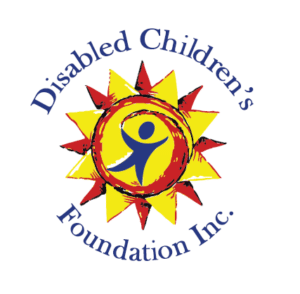

Disclaimer
This publication provides basic information about TSC (Tuberous Sclerosis Complex). It is not intended to, nor does it, constitute medical or other advice. Readers are warned not to take any action with regard to medical treatment without first consulting a health care provider.
©2021 Tuberous Sclerosis Australia (TSA)
